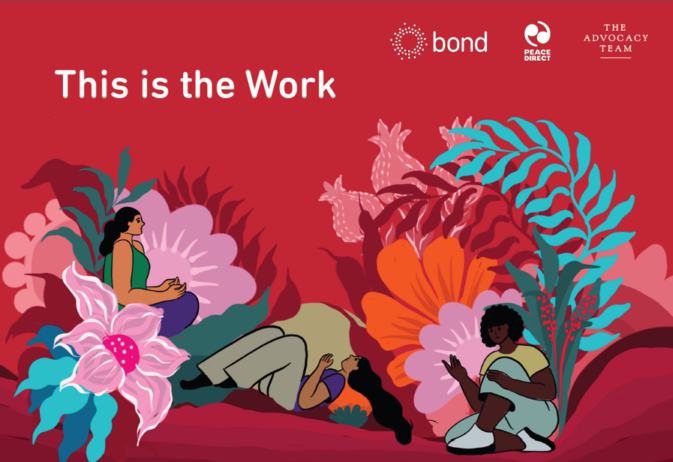The year in UK aid – A late save or a dollar short?
With plenty to welcome in the new White Paper, the reintroduction of a poverty-based Official Development Assistance (ODA) allocation model and recent improvements in transparency, the state of international development in the UK looks set to end 2023 in a much stronger position than it started.
In many ways, the White Paper offers what last year’s Strategy for International Development didn’t; An ambitious, SDG-centred strategy with strong commitments on locally led development and poverty-centred ODA allocation. It’s an inspiring document built on the kind of development expertise and understanding the UK used to be known for.
The 2022 statistics for international development confirmed the worst fears about the current state of UK ODA. Spending on in-donor refugee costs skyrocketed to £3bn, making the UK the largest recipient of its own aid in 2022.
Technically allowed under the OECD DAC’s rules since 2018, spending here has grown from a modest 2-3% to a whopping 28% of the total ODA budget, crowding out traditional international development priorities like health, education and water and sanitation which have all fallen dramatically since 2019. The proposed annual humanitarian budget of £1 billion is two-thirds what it was in 2019, though global humanitarian needs have doubled since then.
What to expect from ODA in 2024
We won’t have the full picture of how UK ODA was spent in 2023 until next year when the final statistics are published in the autumn. However, the White Paper provides some important signposts for how the UK will be spending ODA going forward.
We’re likely to see more ODA spent on:
- Poverty eradication and leaving no one behind. Earlier this year, Andrew Mitchell reintroduced a poverty-based ODA allocation model and the White Paper commits to spending 50% of the UK’s bilateral ODA in least developed and low-income countries. This will hopefully reverse the current trend that has seen the volume of bilateral ODA, which fell across all income groups, fall fastest for countries in the least developed and low-income categories. Least developed and low-income countries received just 10% of UK ODA, according to recent analysis by Development Initiatives.
- Climate and nature-based solutions. Successive strategies have confirmed the high priority of international climate action, despite domestic decisions that have reneged on commitments. The white paper sets climate alongside poverty reduction as a key focus for the UK’s international development work. It also confirms that all international climate finance will continue to be counted as ODA.
- Through British International Investment and other institutions aimed at mobilising private sector investment. As the UK continues to bank on private capital to provide much of the ‘quantum leap’ in funding needed to deliver on the SDGs, the new OECD DAC rules of ODA-eligibility for private sector instruments (PSIs), agreed in October 2023, increases the incentives for private sector-led development. The UK was already the largest DAC provider of ODA via PSIs, accounting for 22% of the total.
- Through multilaterals. While the white paper doesn’t explicitly reverse the commitment to cap ODA spending via multilaterals at 25%, it takes a much more favourable approach, particularly with respect to development banks and their ability to leverage ODA to create additional investment.
The funding conundrum
It is good news that the UK’s international ambition is returning. However, without better resourcing, the government will inevitably be trying to do more with less. Just nine days after the White Paper was published, the Chancellor dashed hopes of a timely return to a 0.7% ODA budget, predicting that a return was unlikely within the next 5 years.
In 2022, the ODA budget was £4.7 billion less than it would have been with the 0.7% target. If GNI holds steady, by the end of 2028, the gap will be the equivalent of more than 3 years’ worth of ODA totalling at least £37.6 billion. It’s likely to be more as GNI continues to rise. A return to the 0.7% GNI target in 2029 bring us precariously close to the deadline for delivering the current set of Sustainable Development Goals (SDGs).
It remains to be seen whether the new joint FCDO-Treasury ODA board will have a significant impact on coherence and prioritisation. We are likely to see in-donor refugee costs fall, but this is the result of new draconian immigration rules that restrict the right to asylum, making their hosting costs ineligible. Recent news of additional funding provided to secure the Rwanda asylum deal suggests the UK will continue to prioritise spending ODA on its hosting responsibilities over international needs.
At this week’s Global Refugee Forum, the FCDO is launching an ‘ambitious package’ including £4 million to help host countries integrate refugee children into schools. The Home Office has already spent £240 million on a deal with Rwanda to house asylum seekers from the UK without a single plane taking off.
The government’s approach to ODA management and decisions around the target has created a series of false choices between the different SDGs, between development and climate finance, and between poverty eradication abroad and meeting the needs of asylum seekers in the UK.
There is nothing in the White Paper to suggest a significant change to the current approach. Unless the government gets the resourcing right, the new White Paper won’t deliver on its ambition, and we’ll all be worse off for it.
Category
News & Views



